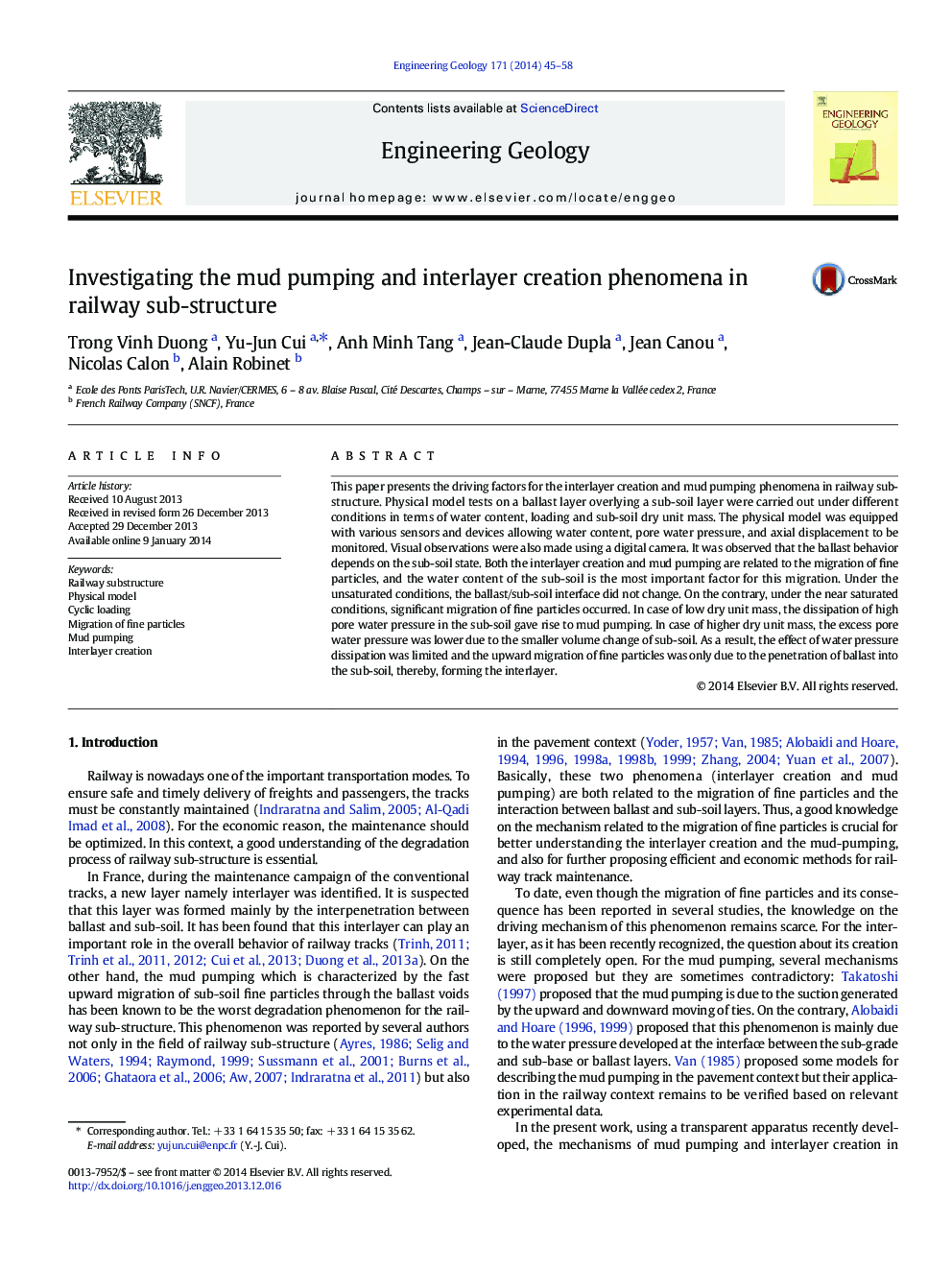| Article ID | Journal | Published Year | Pages | File Type |
|---|---|---|---|---|
| 4743613 | Engineering Geology | 2014 | 14 Pages |
•Mud pumping and interlayer creation were investigated using a physical model.•Sub-soil state can strongly influence the ballast behavior.•Water is the most crucial factor for the migration of fine particles.•At high density the pore water pressure is low, only interlayer creation takes place.•At low density high pore water pressure is generated, hence mud pumping occurs.
This paper presents the driving factors for the interlayer creation and mud pumping phenomena in railway sub-structure. Physical model tests on a ballast layer overlying a sub-soil layer were carried out under different conditions in terms of water content, loading and sub-soil dry unit mass. The physical model was equipped with various sensors and devices allowing water content, pore water pressure, and axial displacement to be monitored. Visual observations were also made using a digital camera. It was observed that the ballast behavior depends on the sub-soil state. Both the interlayer creation and mud pumping are related to the migration of fine particles, and the water content of the sub-soil is the most important factor for this migration. Under the unsaturated conditions, the ballast/sub-soil interface did not change. On the contrary, under the near saturated conditions, significant migration of fine particles occurred. In case of low dry unit mass, the dissipation of high pore water pressure in the sub-soil gave rise to mud pumping. In case of higher dry unit mass, the excess pore water pressure was lower due to the smaller volume change of sub-soil. As a result, the effect of water pressure dissipation was limited and the upward migration of fine particles was only due to the penetration of ballast into the sub-soil, thereby, forming the interlayer.
